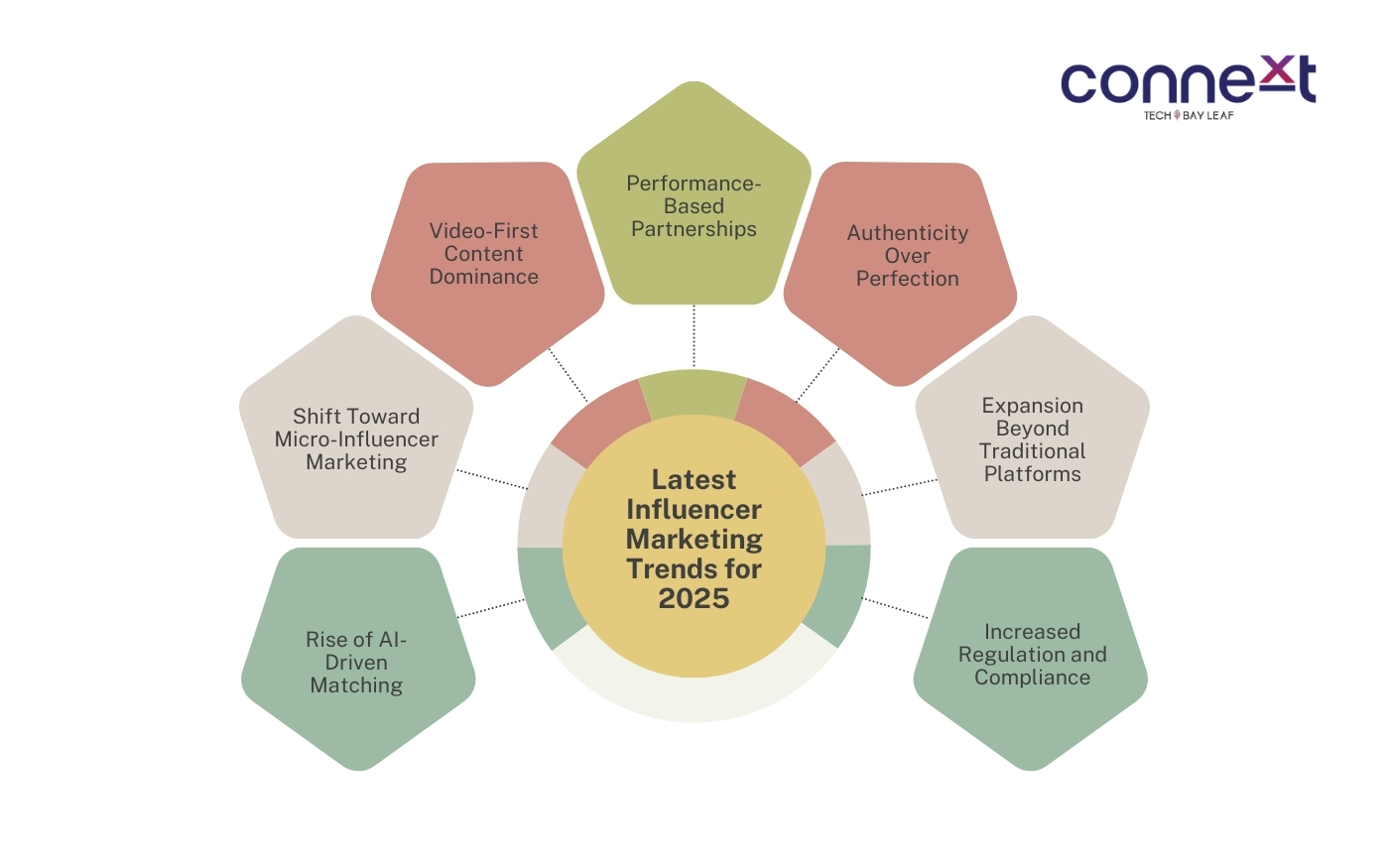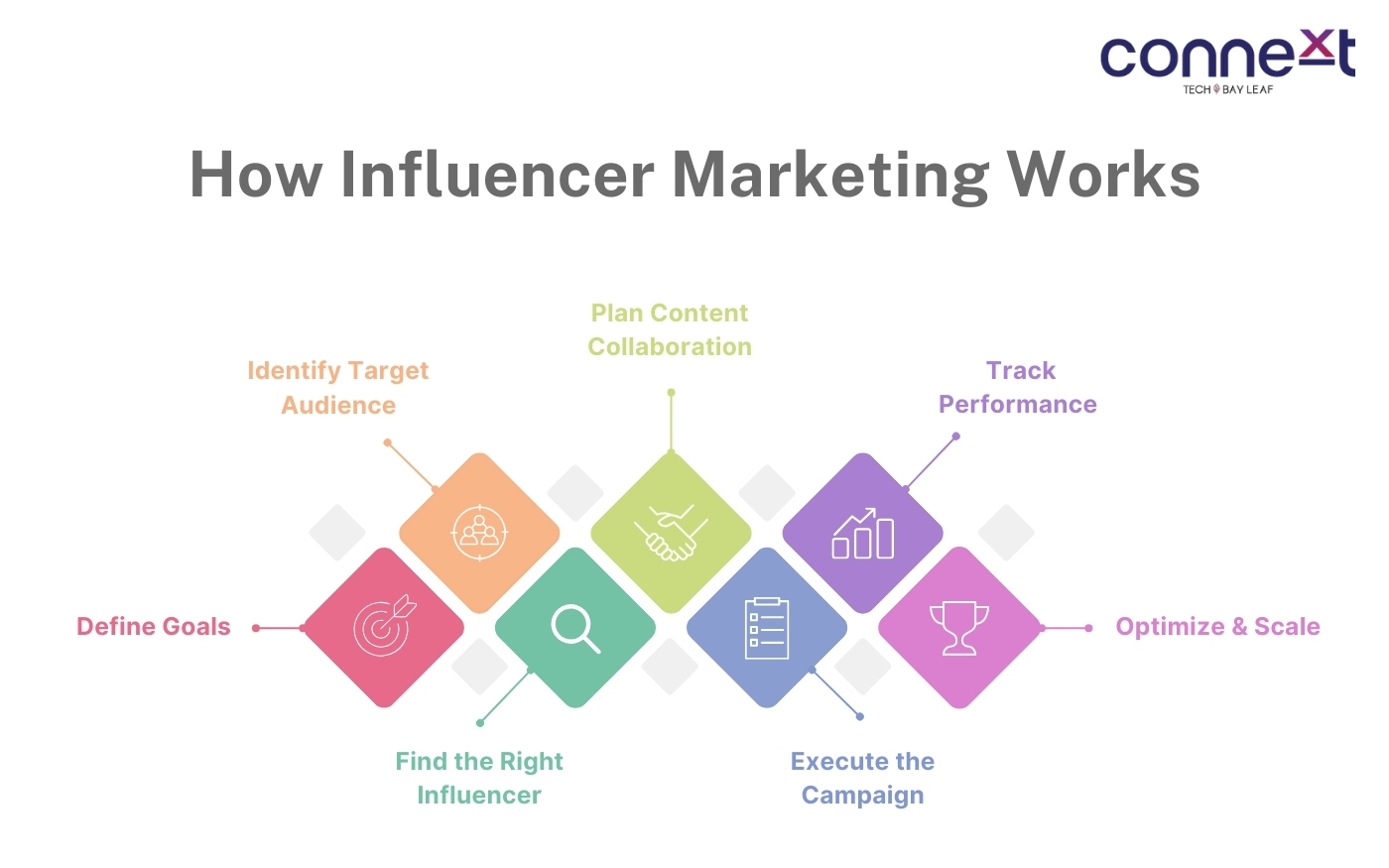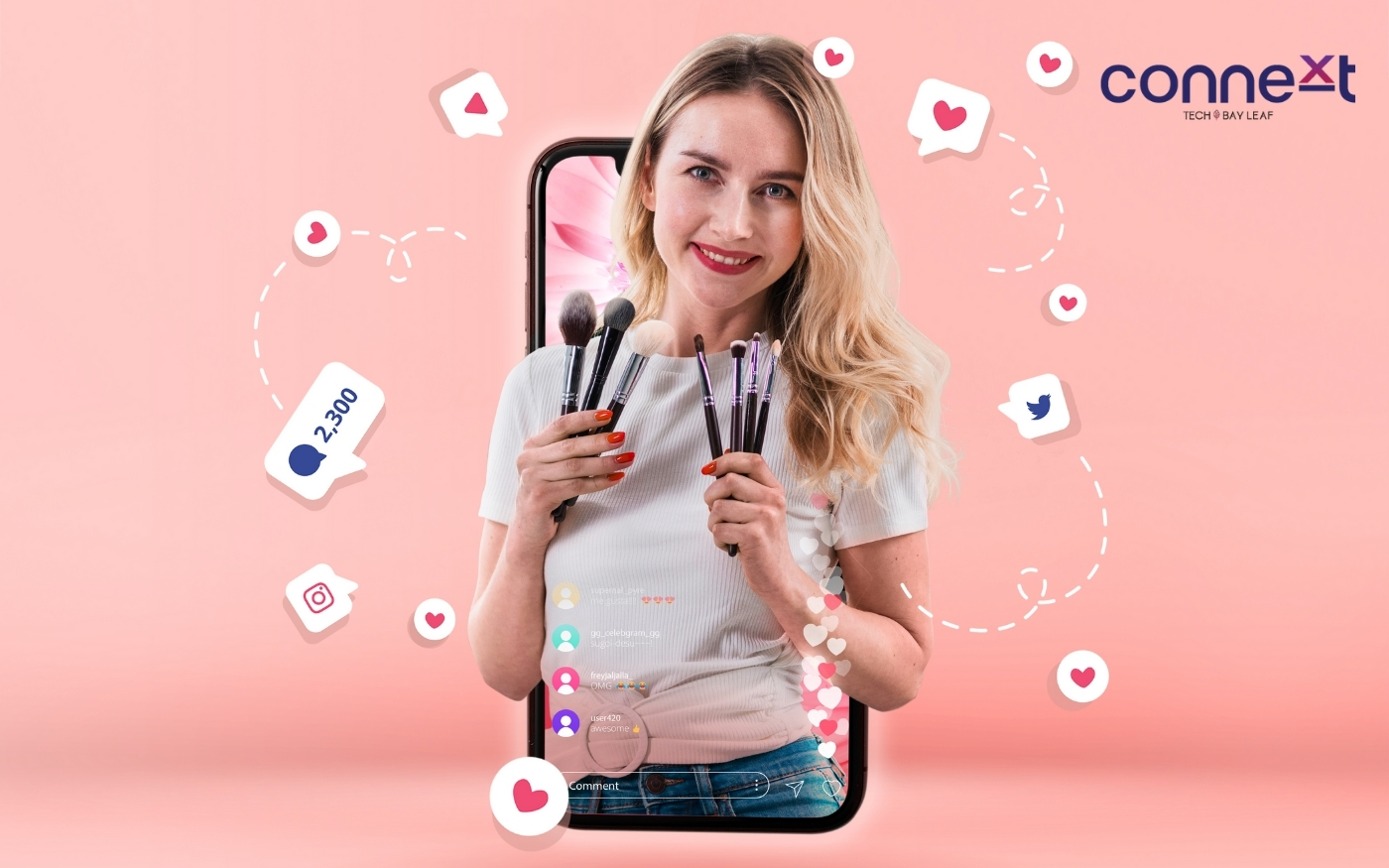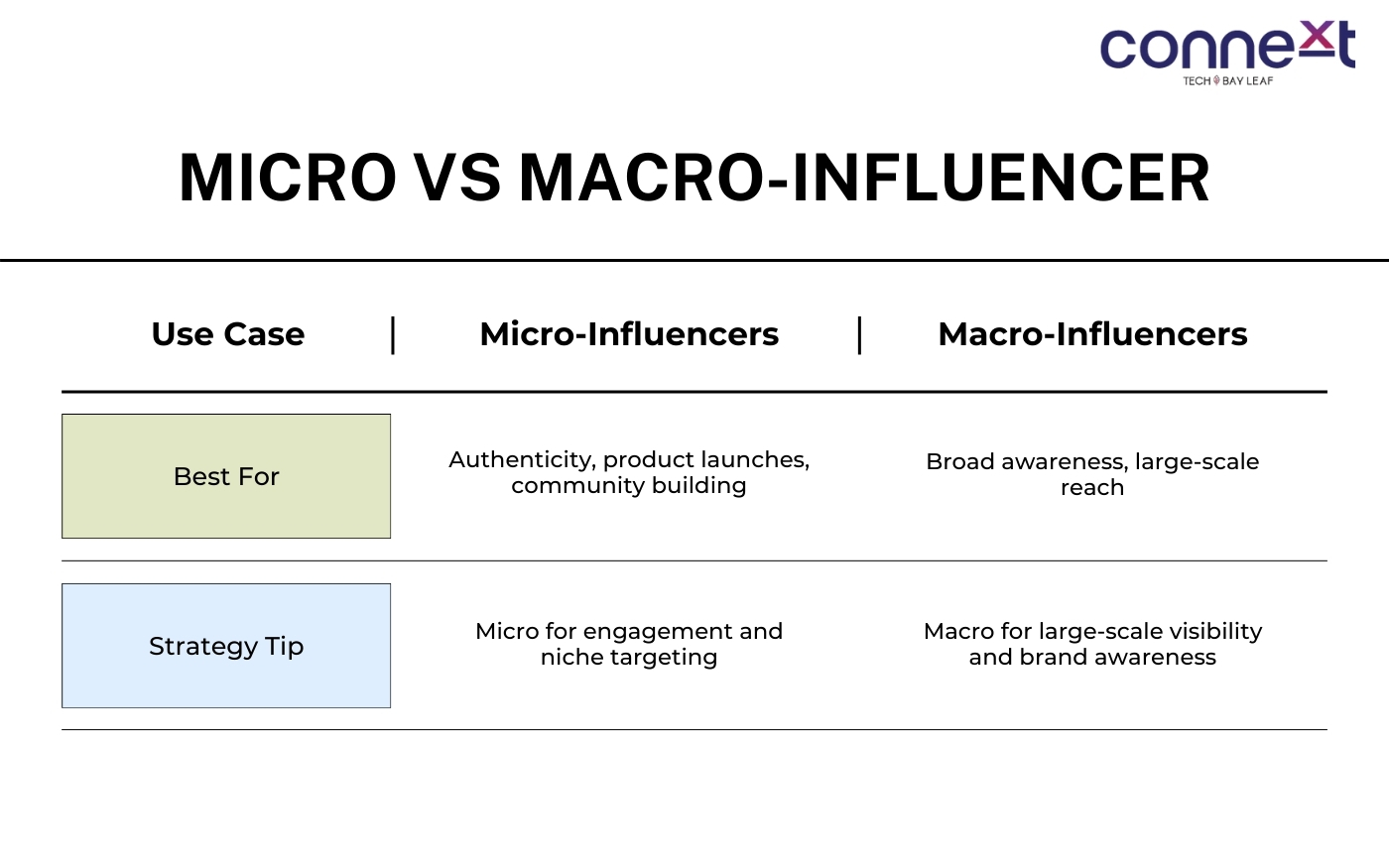Why Influencer Marketing?
Influencer marketing in 2025 is more than just an add-on to digital campaigns. It has become one of the strongest methods for driving awareness, engagement, and conversions. With billions of users spending significant time on platforms like Instagram, TikTok, YouTube, and other social media, influencers have become trusted voices that shape consumer behavior.
Unlike traditional advertising, influencer marketing is all about authenticity, personalization, and community-driven conversations. Audiences seek genuine stories from relatable voices, and influencers provide just that. From micro-creators with tight-knit audiences to global personalities with massive reach, brands now recognize the power of influencers to cut through digital clutter.
This influencer marketing guide follows the constantly changing digital landscape by outlining the influencer marketing trends of 2025, step-by-step campaign planning, influencer selection strategies, ROI measurement, and practical examples. Moving forward, you’ll learn how to design authentic campaigns for measurable success.
What Is Influencer Marketing?
Influencer marketing involves brands working with trusted individuals who have a strong presence and loyal following in a specific niche. These individuals can be celebrities, industry experts, niche creators, or even everyday people who have built loyal audiences through consistent and authentic content.
Influencer marketing is all about leveraging trust. Customers are more willing to test a product when the suggestion comes from someone they respect or admire. Unlike paid ads, which may feel intrusive, influencer content blends naturally into social feeds, making it more engaging and relatable.
An influencer marketing strategy may involve product placements, sponsored posts, giveaways, reviews, or long-term brand partnerships. The effectiveness of a campaign relies on choosing influencers whose values, style, and audience match the brand’s objectives.
In 2025, influencer marketing has evolved beyond simple endorsements. It integrates AI in influencer marketing to identify high-performing partnerships, advanced tracking tools for influencer ROI 2025, and platforms that streamline influencer outreach 2025. Done right, it’s not just promotion; it’s storytelling that builds relationships.

Latest Influencer Marketing Trends for 2025
Influencer marketing is constantly evolving. Here are the top influencer marketing trends of 2025 shaping the industry:
- Rise of AI-Driven Matching
Influencer marketing now uses AI to analyze engagement rates, sentiment, demographics, and even cultural context to help brands find the right influencers efficiently. - Shift Toward Micro-Influencer Marketing
Brands are investing heavily in creators with 10k–100k followers. Compared to mega influencers, micro-influencers provide more genuine content and greater audience engagement. - Video-First Content Dominance
Short-form videos on TikTok, Instagram Reels, and YouTube Shorts continue to drive influencer collaborations. Livestream shopping is also gaining traction as consumers want interactive product experiences. - Performance-Based Partnerships
Instead of flat fees, influencer contracts increasingly include affiliate-style payouts, revenue shares, and bonus incentives tied to sales or clicks, making influencer ROI easier to measure. - Authenticity Over Perfection
Audiences now value relatable, unpolished content. Brands are moving away from scripted promotions and encouraging influencers to share genuine experiences. - Expansion Beyond Traditional Platforms
Social media collaboration is expanding into podcasts, Substack newsletters, and even VR/AR environments where influencers create immersive brand experiences. - Increased Regulation and Compliance
Transparency is crucial in 2025. Influencers must clearly disclose partnerships, while brands must prioritize ethical and responsible campaigns.
These trends highlight how influencer marketing works today. It’s data-driven, authentic, and based on mutual trust among creators, audiences, and brands.

Step-by-Step: How Influencer Marketing Works
To succeed, brands need to follow a clear process. Here are some core influencer campaign steps to use in 2025:
1. Define Goals
Start by clarifying what you want. Is it brand awareness, lead generation, conversions, or community engagement? Your influencer marketing strategy should tie back to measurable KPIs.
2. Identify Target Audience
Know your customers’ demographics, interests, and preferred platforms. This ensures you find the right influencer with an audience that would be interested in your brand.
3. Find the Right Influencer
Use an influencer marketing platform or AI-driven tools to evaluate potential partners. Look at engagement quality, authenticity, content style, and alignment with brand values.
4. Plan Content Collaboration
Co-create authentic influencer campaigns. Give influencers creative freedom while setting guidelines on messaging, hashtags, and campaign objectives.
5. Execute the Campaign
Launch the content across agreed platforms. Influencers may post reels, stories, blogs, or long-form videos. Brands may amplify these posts through paid ads for extended reach.
6. Track Performance
Monitor campaign metrics in real-time: engagement, clicks, conversions, and sentiment. Tools for influencer ROI in 2025 provide deeper insights into long-term brand lift.
7. Optimize & Scale
Analyze what worked and apply learnings to future campaigns. Successful influencer outreach often leads to long-term partnerships instead of one-off deals.
Example: A fitness brand launching a new protein bar might collaborate with 20 micro-influencers on Instagram and TikTok. Each influencer shares honest reviews, workout routines, and snack ideas. The brand tracks affiliate links to measure sales and may also partner with high-performing creators for future campaigns.
This process illustrates how influencer marketing works: strategy, collaboration, measurement, and optimization.
How to Choose the Right Influencer
Finding the right influencer is the hardest step, but the most crucial. Here’s how it can be done:
- Audience Fit: Ensure the influencer’s followers match your target customer profile in terms of age, interests, and location.
- Engagement Quality: High follower counts don’t always mean impact. Take into consideration the likes, comments, and shares relative to follower size.
- Authenticity: Review past content for consistency and transparency. Do they genuinely believe in the products they promote?
- Content Style: Their tone and visuals should align with your brand voice. For example, a luxury skincare brand may need polished aesthetics, while a lifestyle brand may prefer casual storytelling.
- Past Collaborations: Check influencer marketing examples to see if they’ve worked with competitors or conflicting brands before.
In 2025, AI tools make it easier to filter through thousands of profiles and identify influencers with genuine impact. However, human judgment remains critical. Brands should go beyond numbers and consider the influencer’s personality, credibility, and ability to drive authentic influencer campaigns.
Remember, choosing the right influencer is not about who’s the biggest; it’s about who’s the best fit for your campaign goals.

Influencer Campaign Strategy
A strong influencer marketing strategy balances creativity, structure, and authenticity. Here’s how to design one:
1. Set Clear Objectives
Decide if your goal is awareness, consideration, or direct sales. Each requires different influencer campaign steps.
2. Match Content Format to Goals
- Awareness → TikTok/Reels challenges
- Engagement → Instagram stories, polls, or Q&As
- Sales → Discount codes, affiliate links, product demos
3. Develop a Content Calendar
Coordinate posts across influencers for consistent messaging while avoiding audience fatigue.
4. Encourage Authenticity
Provide influencers with brand guidelines, but avoid micromanaging. Authentic influencer campaigns perform best when creators maintain their voice.
5. Leverage Multiple Tiers of Influencers
Combine mega influencers for reach and micro-influencer marketing for engagement.
Influencer Marketing Examples:
- Fashion Brand Launch: A clothing brand partners with micro-influencers across college campuses for authentic student lifestyle content, while also collaborating with one macro-influencer for a global campaign reveal.
- Tech Product: A smartwatch brand uses YouTube reviewers (macro-influencers) to explain features, alongside TikTok creators (micro-influencers) for quick tutorials.
- Food Brand: A snack company partners with fitness micro-influencers who create meal-prep videos, while lifestyle influencers show casual snacking moments.
By combining creativity with strategic planning, influencer marketing campaigns maximize impact across channels.
One of the most common questions is “How do you measure influencer ROI in 2025?”
Key metrics include:
- Engagement Rate: Likes, shares, comments, and saves.
- Reach & Impressions: Total audience exposed to the content.
- Traffic & Conversions: Clicks, sign-ups, or purchases via affiliate links or discount codes.
- Brand Sentiment: Positive vs. negative mentions in campaign-related discussions.
- Long-Term Impact: Brand lift studies measuring awareness or loyalty.
Advanced influencer marketing platforms now integrate attribution models, which are methods for identifying which influencer interactions (like clicks, views, or discount code use) contribute to a final sale. This makes it easier to link influencer activity directly to revenue.
A useful approach is the EMV (Earned Media Value) model, which assigns a dollar value to engagement, helping quantify the return on investment.
Influencer ROI is not just about sales. A successful campaign may boost brand trust, spark community conversations, or create reusable content for future marketing.

Micro vs Macro-influencer: Who’s Best?
Brands face a choice. Should they work with micro-influencers for authenticity or macro-influencers for scale?
- Micro-influencers (10k–100k followers)
- Pros: Higher engagement, niche audience, cost-effective, authentic connections.
- Cons: Limited reach, need multiple partnerships for scale.
- Macro-influencers (100k–1M+ followers)
- Pros: Massive reach, strong brand recognition, polished content.
- Cons: Expensive, sometimes lower engagement, audiences may perceive promotions as less authentic.
Micro vs. Macro: Selecting the Best Fit
It depends on your campaign. Micro-influencer marketing works well for authenticity-driven campaigns, product launches, and community-building. Macro-influencers are more effective for broad awareness campaigns and international product launches.
In practice, the most effective influencer marketing strategy combines both micro for engagement and macro for visibility.
Key Platforms & Tools in 2025
The influencer marketing landscape is supported by powerful platforms and tools. Key players in 2025 include:
- Influencer Marketing Platforms: AI-driven tools like Aspire, Upfluence, and Influencity help brands find the right influencer, manage campaigns, and track performance.
- Analytics Tools: Platforms like HypeAuditor and Traackr provide in-depth influencer ROI metrics and audience authenticity checks.
- Content Collaboration Tools: Tools like Notion, Trello, or Asana help manage influencer campaign steps across teams.
- Social Media Platforms: TikTok, Instagram, YouTube, and emerging platforms boost influencer outreach in 2025.
Choosing the right tools is crucial for efficiency, compliance, and measurable success.
Brand Safety & Compliance Tips
Influencer marketing 2025 requires strict attention to compliance. Best practices include:
- Clear Disclosures: Ensure influencers use #ad or #sponsored tags as per regulations.
- Contractual Safeguards: Include clauses on content rights, FTC compliance, and brand reputation.
- Audience Authenticity Checks: Use platforms to detect fake followers or engagement fraud.
- Crisis Management Plans: Have a strategy for handling negative publicity or influencer missteps.
- Ethical Standards: Prioritize inclusivity, responsible messaging, and genuine representation.
By proactively addressing compliance, brands protect their reputation while ensuring authentic influencer campaigns remain trustworthy.
Authenticity & Building Trust
Influencer marketing in 2025 runs on authenticity. Because audiences can easily spot forced endorsements, making genuine partnerships is essential.
To build trust:
- Choose influencers who already use or resonate with your product.
- Encourage unscripted storytelling rather than rigid brand messages.
- Foster long-term brand partnerships instead of one-time posts.
- Highlight user-generated content to strengthen community credibility.
Authentic influencer campaigns not only drive short-term sales but also build long-lasting brand loyalty.
Get Started With Connext
Connext by Tech Bay Leaf helps brands streamline influencer outreach, discover the best creators, and launch high-ROI campaigns with ease. From micro-influencer marketing to global brand partnerships, Connext, an influencer marketing agency in the US, gives you the tools to run authentic, data-driven campaigns that build trust and deliver results.
Ready to take the next step? Get started with Connext today and unlock the future of influencer marketing.
FAQ
The approach integrates artificial intelligence, authentic influencer relationships, and tracking systems. Brands define goals, select the right influencers, co-create content, and measure ROI.
Micro-influencers often deliver higher engagement and trust, while macro-influencers excel in reach. A balanced strategy uses both.
AI-based influencer discovery, micro-influencer dominance, video-first content, performance-based contracts, and stricter compliance rules.
Track engagement, reach, conversions, sentiment, and long-term brand lift using advanced influencer marketing platforms.
Campaigns where influencers share genuine experiences, use the products themselves, and maintain transparency with their audience.


